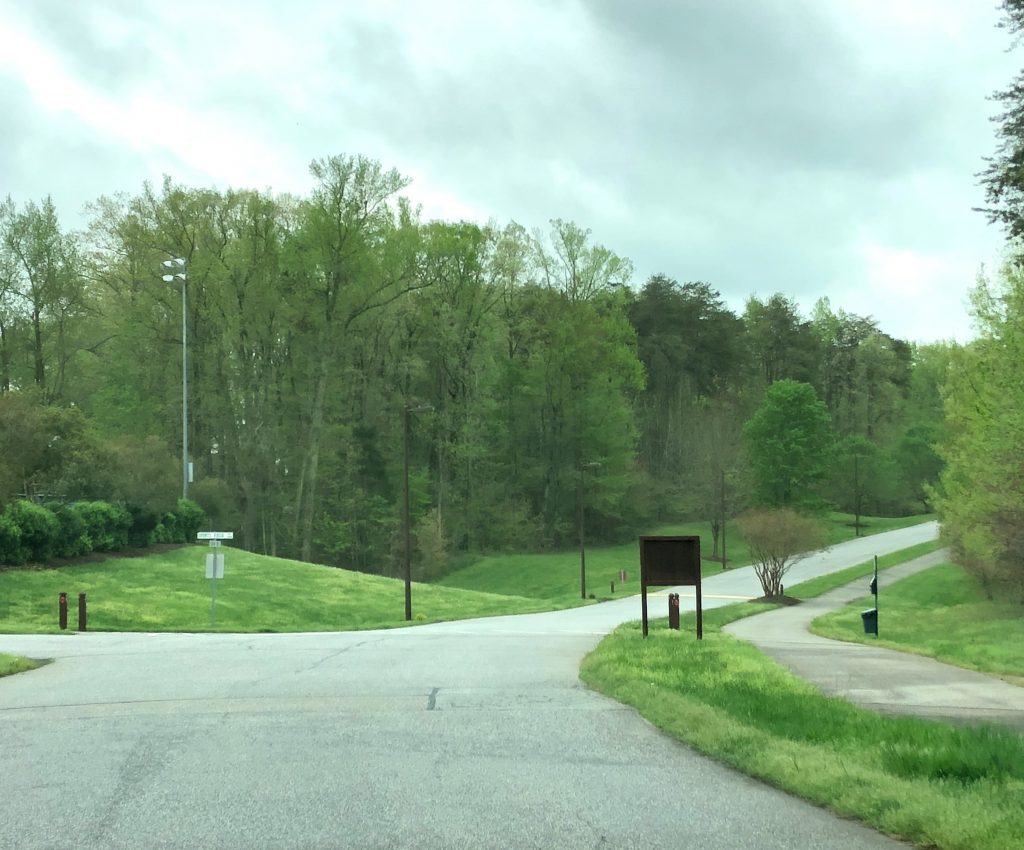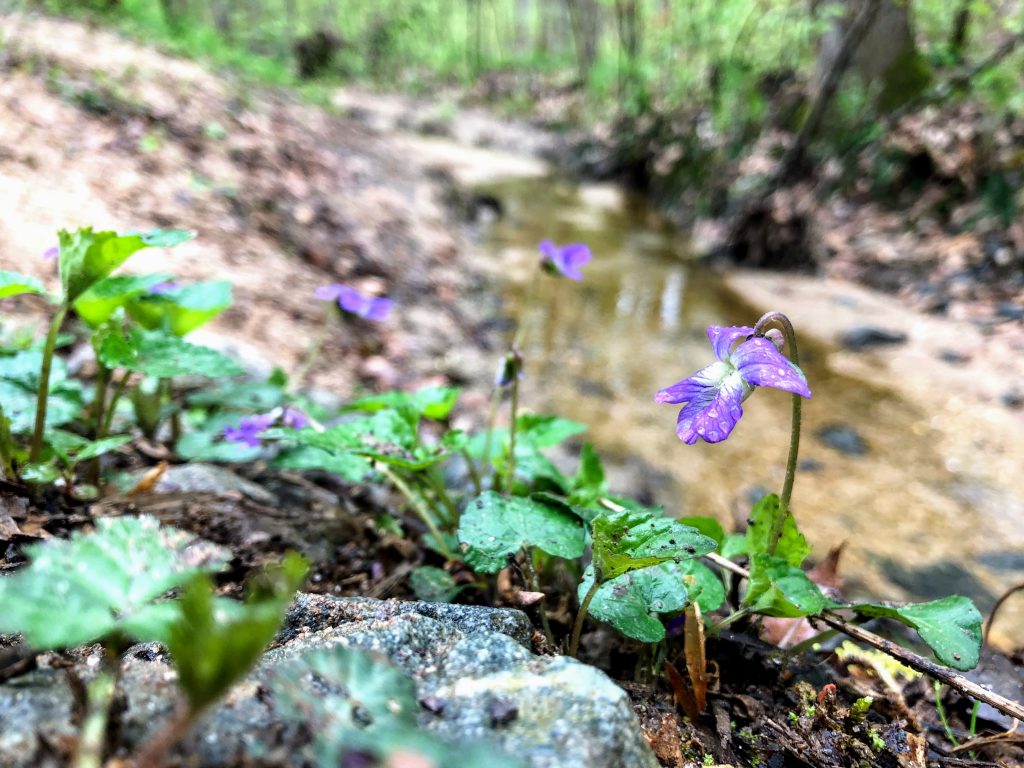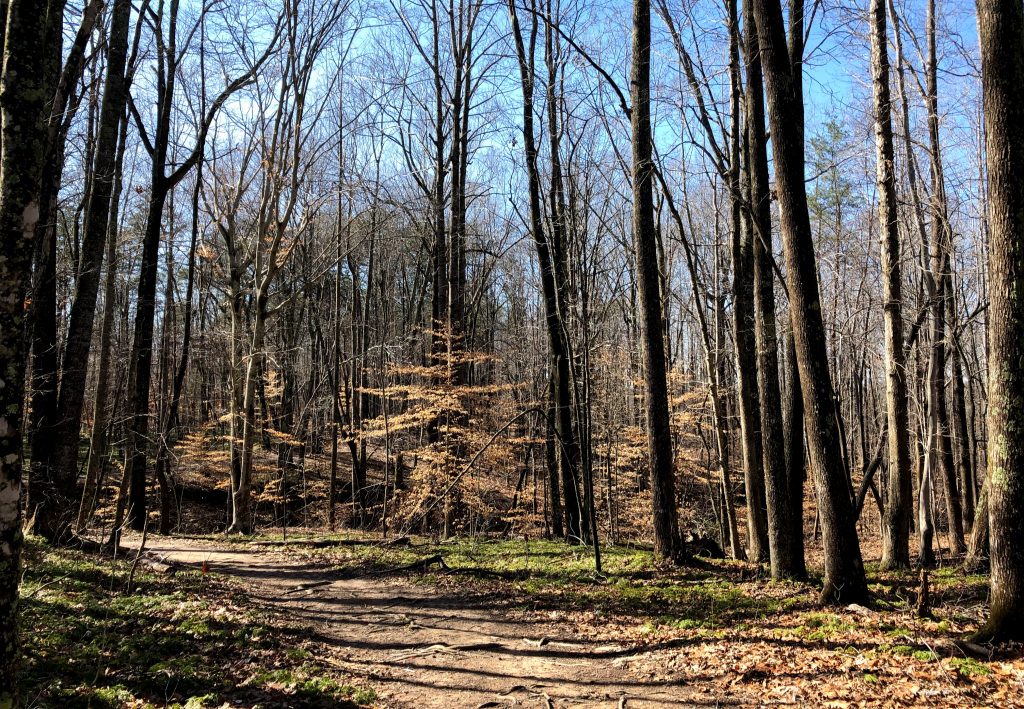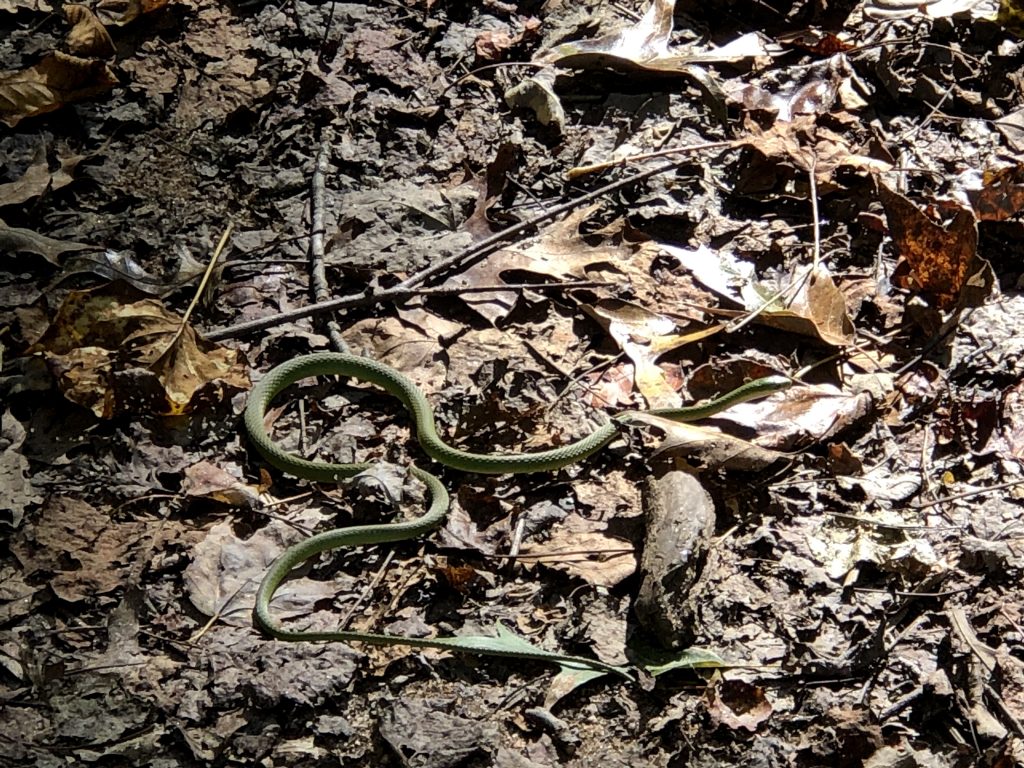Well, it’s Spring. You know what that means, right? Leafy trees? Sunshine? Nope. Sneezes. So much sneezing. Normally I am enamored with the park even more during the warmer months, but specifically during the month of April, the pollen gets to me. As I am sure that it’s affecting my fellow Guilfordians, it sure is affecting the attendance at the park. What is commonly a semi-full parking lot has been reduced to my car and a few stragglers. We’re the touch bunch, I guess. That’s what a lady that I normally see walking on the trail said to me yesterday; “We’re the diehards.”
Granted, yesterday, there was a tornado watch in effect and the air reeked with uncertainty, but I took what she said to heart. While many other hikers on the trail would shy away during the “yellow months” (and during tornado watches), that woman and I hike on. Luckily yesterday it was sunny enough outside to capture just how much pollen is in the air. I could feel it in my throat, and this time I could actually see it in the air, like a foreign cloud.

One of the trees on the trail that I saw the most pollen drift from is the tulip poplar. These trees, also referred to as Liriodendron tulipifera by science, are one of the more common trees around the hiking trail. What gives their identity away are the tulip-like flowers that grow among the leaves. I have some around my house, so it’s easy to identify the species everywhere else that I encounter them. A fun fact about tulip poplars is that they are the tallest eastern hardwood. Additionally, they are also referred to as “tulip trees.” While tulip poplars are pleasing to the eye, the pollen that they disperse messes up my whole sinus thing. Not a fun experience to undergo (as you know).

Every time that you hike on the Triad Park trail, you pass the creek in close proximity. While I was on the trail yesterday, I noticed a patch of common blue violets (also known as “wild violets” or Viola

Another cool thing about the forest of Triad Park is that it is littered with wild dogwood trees. These trees, also referred to as Cornus florida, have beautiful white flowers that bloom in the springtime. If you hike on the trail, you will be able to spot a good number of them in the surrounding wilderness. I have a few of them around my home, so as is commonly the case with other familiar trees, it’s a nice treat to catch them in the wild.


